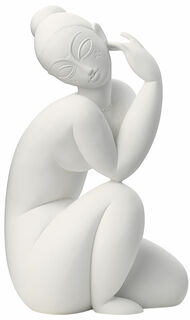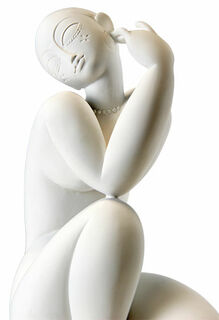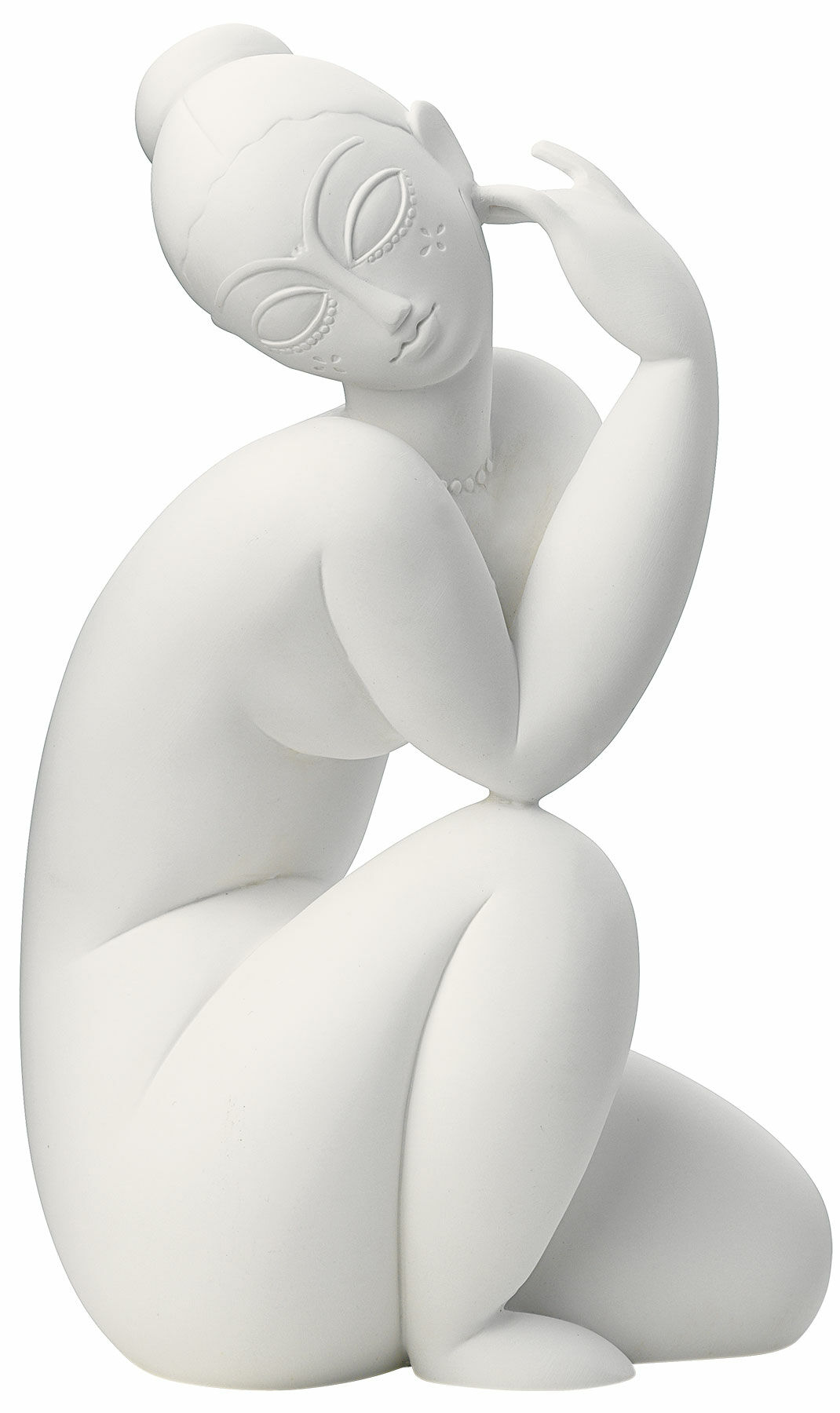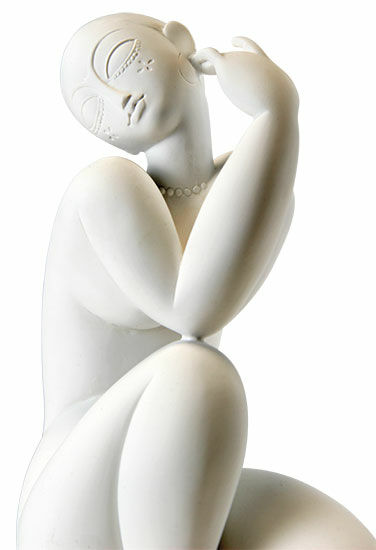Quick info
cast | size 21.5 x 9.5 x 12.5 cm (h/w/d) | weight 1.5 kg
Detailed description
Sculpture "Nu Féminin Assis" (1913), cast
The filigree nude in the sculptural tradition of classical modernism appears all the more sensitive because of the abstract, sketchy execution. Figurine made of porcelain-like resin cast. Size 21.5 x 9.5 x 12.5 cm (h/w/d). Weight 1.5 kg.
Customer reviews
Auf diese hübsche Skulptur bin ich auf verschlungenen Pfaden im Online-Katalog gestoßen. Was der Katalog verschweigt: die Plastik geht tatsächlich auf einen Entwurf des großen Meisters Amadeo Modigliani zurück. Eine Kohlezeichnung diente als Vorlage für die Umsetzung in diese dreidimensionale Darstellung eines sitzenden weiblichen Akts.
Dabei tut die Einfachheit des verwendeten Materials dem künstlerischen Wert keinen Abbruch. Im Gegenteil: gerade das puristische Weiß harmoniert sehr gelungen mit der reduzierten und doch elegant filigranen, "femininen" Formensprache.
Diese Skulptur ist ein schönes Beispiel dafür, dass es nicht immer das besonders Großartige und Teure sein muss, um künstlerischen Ausdruck angemessen zu vermitteln. Ich bin über diesen Zufallsfund zum äußerst moderaten Preis sehr glücklich und darf mich bei ars mundi bedanken, dass es auch fürs kleine Budget immer wieder ausdrucksstarke Kunst zu entdecken gibt.
Collective term for all casting processes that ars mundi carries out with the help of specialised art foundries.
Stone casting
Similar to artificial marble, with the difference that the substitute stone in powder form is used instead of marble powder.
Bonded Bronze (Cold-Cast-Bronze)
Bronze powder is polymer-bonded. Special polishing and patination techniques give the surface of the casting an appearance similar to the bronze.
Imitation Wood
In order to guarantee absolute fidelity to the original, an artificially manufactured imitation wood is used as a base material that features typical wood characteristics: density, workability, colour and surface structure.
Ceramic Mould Casting
Ceramic mould casting usually requires the use of casting clay, which is then fired and optionally glazed. Instead of the usual rubber moulds, plaster moulds are often used in ceramic casting and porcelain production.
Cast Bronze (Lost-Wax Casting)
For the cast bronze, the thousand-year-old lost-wax technique is used. It's the best, but also the most complex method of producing sculptures.
A plastic work of sculptural art made of wood, stone, ivory, bronze or other metals.
While sculptures from wood, ivory or stone are made directly from the block of material, in bronze casting a working model is prepared at first. Usually, it is made of clay or other easily mouldable materials.
The prime time of sculpture after the Greek and Roman antiquity was the Renaissance. Impressionism gave a new impulse to the sculptural arts. Contemporary artists such as Jorg Immendorf, Andora, and Markus Lupertz also enriched sculptures with outstanding works.






